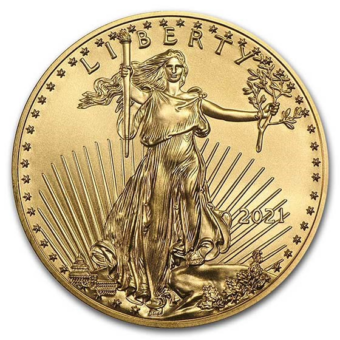The Gold Trail: A Daily Journey Through the Week's Market
Monday - 9.04.23: Labor Day US Markets Closed
Tuesday - 9.05.23: Gold and silver prices declined likely due to profit-taking after a recent rally. The US dollar strengthened against other currencies, making gold more expensive for buyers holding other currencies. Expectations of higher interest rates also weighed on gold prices, as higher interest rates could lead to higher opportunity costs for holding gold.
Wednesday - 9.06.23: Precious metals declined on Wednesday due to rising US treasury yields and a strengthening US dollar. US treasury yields rose to their highest level in a month, as investors priced in the possibility of more aggressive interest rate hikes by the US Federal Reserve. A stronger US dollar also made gold more expensive for buyers holding other currencies.
Thursday - 9.07.23: In midday trading Thursday, gold prices remain relatively steady, while silver prices have declined. Market participants are awaiting the U.S. consumer price index report for August, scheduled for release on September 13th, for cues on price movement. Currently, both gold and silver display bearish near-term technical outlooks, causing hesitancy among investors. Meanwhile, December gold was marginally up, while December silver decreased.
Friday- 9.08.23: Gold prices are firmer in quiet early U.S. trading, with December gold up $4.80 at $1,947.30. Silver prices are near steady, with December silver up $0.050 at $23.29. Asian and European stock markets were mostly weaker overnight, and U.S. stock indexes are pointed to slightly weaker openings. Traders and investors are waiting for the next major U.S. data point, which will likely be the consumer price index report for August, out next Wednesday.
Deutsche Bank Cautions of Potential U.S. Recession Amid Fed's Anti-Inflationary Measures
Despite prevailing optimism about the U.S. economy, Deutsche Bank has issued a warning: the aggressive steps taken by the Federal Reserve to counter soaring inflation might inadvertently thrust the U.S. into a recession. As inflation significantly surpasses its target, the bank believes that the Fed's tightening of monetary conditions, while essential, poses a risk to economic stability. Many investors anticipate a "soft landing" wherein the Fed manages to contain inflation without derailing the economy. However, Deutsche Bank analysts contend that to achieve the inflation target, the Fed might need to suppress economic demand. This move could manifest more noticeable economic strain by early next year. Contrarily, other financial institutions, like Goldman Sachs, have recently been more optimistic, reducing their recession forecasts.
Gold and Silver Await U.S. CPI Amidst Quieter Trading
Gold and silver prices saw modest gains in the quieter early U.S. trading on Friday. The mild increase in gold prices can be attributed to short covering and perceived bargain hunting after recent dips, with December gold last reported at $1,947.30 and silver at $23.29. Asian and European stocks witnessed a mostly weaker performance, while U.S. stock indexes hinted at potential weaker starts for the New York trading session. Market participants are anticipating the release of the U.S. Consumer Price Index (CPI) report for August, which may likely be the next significant data point. Other noteworthy market updates include a slight dip in the U.S. dollar index, firming crude oil prices around $87.50 per barrel, and the U.S. Treasury 10-year note yield standing at 4.24%. On the technical front, gold and silver bears seem to have an edge in the near-term market dynamics.
Gold Buying Soars to 11-Year High Amid Central Bank Activity
Gold investment has reached an 11-year zenith, as indicated by an assessment from JPMorgan strategist Nikolaos Panigirtzoglou. The surging allocation to gold, particularly by non-bank investors, has predominantly been driven by central bank acquisitions. The data was ascertained by juxtaposing the gold stock – whether in coins, bars, or physical gold ETFs – against the stockpile of financial assets. Although this elevated allocation signals an exceptional historical standard, bullish sentiments on gold necessitate an anticipated surge in central bank demand, either due to potential sanctions or a strategic diversification shift away from G7 government bonds. However, recent World Gold Council figures for Q2 suggest a steadying in central bank gold buying, potentially influenced by instability in Turkey. Panigirtzoglou emphasizes the critical role of central bank purchases in determining gold's future price trajectory. As of Thursday, front-month gold futures displayed a 6% year-on-year rise, trading at $1,943 an ounce.
Inflation Fuels a Gold Rush in Japan
Due to mounting concerns over inflation, Japanese consumers are increasingly purchasing gold, pushing its retail price to a record high, exceeding ¥10,000 per gram. The surge in yen-denominated gold prices, which aligns with global spot prices affected by the pandemic, the Ukraine conflict, and US-China tensions, also mirrors the yen's significant decline against the US dollar. Experts attribute this trend to the Bank of Japan's continuous loose monetary policy and a considerable interest rate gap with the US and Europe. Jesper Koll, an economist, highlighted that after years of no substantial reason to diversify from cash, Japanese households are now urgently seeking protection against inflation. Despite accumulating over ¥2 quadrillion in assets during the pandemic, Japanese households kept around half of this in cash. The shift towards gold indicates a transformative approach to managing assets amidst rising consumer prices and a potential prolonged inflationary environment in Japan.
Silver Struggles Amid Strengthening U.S. Dollar and Skyrocketing Treasury Yields
The robust U.S. Dollar combined with soaring Treasury yields is taking a toll on silver, making it a less attractive buy for investors using other currencies, says James Hyerczyk of FX Empire. As the U.S. dollar nears a six-month peak and Treasury yields surge, spot silver prices have dipped to two-week lows. A significant reason behind this trend is the growing appeal of high interest rates, largely due to uncertainties about China's economic health and global growth. Post the Labor Day long weekend, market focus has shifted to the U.S. Treasury yields, recently hitting a 14-year record, and the evolving oil prices. Meanwhile, the recent nonfarm payrolls report has signaled the highest unemployment since early 2022 and reduced hourly earnings, reshaping investor perceptions about inflation and Federal Reserve policies. Technical indicators affirm the prevailing bearish sentiment for silver, but certain signs hint at a potential slowdown in its downward trajectory.
China's Golden Strategy: Bolstering the Yuan Amidst De-dollarization Trends
China's central bank, the People's Bank of China (PBOC), bought 29 tonnes of gold in August, marking the tenth consecutive month of gold addition to its foreign reserves. This purchase brought the year-to-date acquisitions to 155 tonnes, representing the bank's largest purchase since December. Experts believe this is part of China's strategy to bolster the yuan's international credibility, aiming to position it as a competitor to the U.S. dollar in the global reserve currency market. Analysts expect China to continue this trend as a long-term gold buyer in the broader movement of de-dollarization. In the context of the gold market, the U.S. dollar index trades near a six-month high while the demand from central banks like PBOC supports gold's resilience. Nevertheless, for gold prices to soar, there's a need for global growth deceleration and a dip in bond yields.
Next Week’s Key Events
Monday, Sept. 11:
There are no reports scheduled.
Tuesday, Sept. 12:
At 6:00 am, the NFIB Optimism Index for August will be released.
Wednesday, Sept. 13:
At 8:30 am, the Consumer Price Index (CPI) for August is due.
Thursday, Sept. 14:
Three reports are set to be released at 8:30 am: Initial Jobless Claims for September 9, the Producer Price Index (PPI) for August, and the U.S. Retail Sales for August.
Friday, Sept. 15:
At 8:30 am, the Empire State Manufacturing Survey for September will be published. This will be followed by the Industrial Production and Capacity Utilization report for August at 9:15 am. At 10:00 am, the preliminary Consumer Sentiment for August will be disclosed.
Potential Impact on the Silver and Gold Market:
- NFIB Optimism Index: A high optimism among small businesses can indicate a robust economy, potentially lessening the appeal of gold and silver as safe-haven assets.
- Consumer Price Index (CPI): An elevated CPI suggests inflation, which could boost the appeal of gold as an inflation hedge.
- Initial Jobless Claims: High jobless claims can hint at economic instability, potentially making precious metals more attractive.
- Producer Price Index (PPI) & U.S. Retail Sales: These indices indicate economic health. Strong numbers might reduce the appeal of gold and silver, while weak numbers can do the opposite.
- Empire State Manufacturing Survey: A thriving manufacturing sector might reduce the appeal of precious metals as safe havens.
- Industrial Production and Capacity Utilization: High numbers can signify economic strength, potentially impacting gold and silver negatively.
- Consumer Sentiment: Positive consumer sentiment may lead to reduced demand for safe-haven assets like gold and silver. Conversely, a negative sentiment might boost their appeal.





















